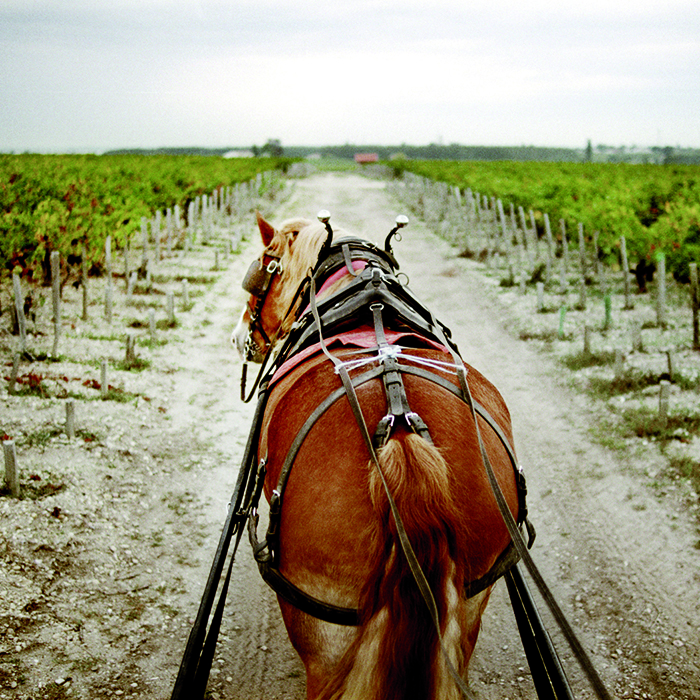The new face of Bordeaux
Author: Sophie Thorpe

It’s all too easy to think of Bordeaux as a traditional stalwart in the world of wine – a hive of Old World charm, with prestigious châteaux producing classical wines – but perhaps not one you’d consider exciting. This couldn’t be further from the truth.
There’s a push here – as in much of the wine world – toward sustainability, with some of the region’s most famous properties leading the way. Fifth Growth Château Pontet-Canet started experimenting with biodynamics in 2004, and has been certified organic and biodynamic since 2010. And they’re not alone, with many others following in their footsteps, including Châteaux Latour, Palmer, Brane-Cantenac and Haut-Bages Libéral.
Earlier this year, the Bordeaux Wine Council announced several new environmentally friendly initiatives around the region. Soon, organic and sustainable viticulture will be required to qualify for the St Emilion appellation, while they also plan to increase the sustainable credentials necessary for wines classed as Bordeaux Supérieur.
But it’s not just about a sustainable approach. Producers are also experimenting, both in the vineyard and in the winery.
Increasingly we are seeing varietal expressions of the “other” Bordeaux grapes, such as Cabernet Franc and Malbec. Some producers are looking beyond the appellation’s permitted varieties. A few have looked back in time for inspiration, combining fruit from Bordeaux and the Rhône, recreating the Syrah blends that were once common (such as this); others are experimenting with different grapes – such as Chardonnay.
When it comes to the winery, there’s a move towards using whole-bunch fermentation (as in Burgundy and much of the wine world) and trialling different vessels for maturation. Oak barrels are merely the beginning – with acacia or Stockinger barrels, concrete eggs, and even clay amphorae all in the mix.
Bordeaux is certainly beginning to shake off its traditional reputation – and the results are proving that the old ways aren’t necessarily the best.
Three to try
2014 Domaine de Valmengaux, Bordeaux: Domaine de Valmengaux is the brainchild of musician-cum-winemaker Vincent Rapin. Based in the town of Vérac – between Pomerol and St Emilion, the domaine is certified organic and uses biodynamic techniques. In the vineyard, there’s a complex system of co-planting of other species to promote vine health, while in the winery Vincent is moving toward the use of less oak and has been investing instead in 12-hectolitre Stockinger barrels and amphorae, vessels which he feels allow the wine to express its true character. The grapes are hand-harvested, with only natural yeasts used and Vincent does not use SO2, but instead favours a polyphenol liquid which is also organic. The resulting wines how a real lightness of touch and elegance. The 2014 is a blend of 90% Merlot with 10% Cabernet Franc, with complex layers of damson and bramble fruit, as well as a savoury touch. It’s amazingly easy to drink.
2015 Château Coutet, St Emilion: This property – bearing the same name as the prestigious Barsac property – is a hidden Gem in St Emilion. Opposite Château Angélus, on a hill surrounded by trees, the team here encourages biodiversity and – despite only achieving organic certification in 2012 – the vineyards have never seen pesticides or weed-killer. Adrien David Beaulieu is the 14th generation of his family to live and make wine here. The 11.5 hectares of vines are interspersed with coppices and meadows, which make Château Coutet a paradise for rare flora and fauna (as well as wine lovers). The 2015 offers ripe, plummy cassis fruit and sweet spice, while the palate has a lovely freshness with oodles of cool, juicy fruit. Try it with slow-cooked lamb dishes. Drink now to 2025. (Find a bottle in either of our shops.)
2014 Château Smith Haut Lafitte, Pessac-Léognan: Daniel and Florence Cathiard bought this property in 1990. The pair of champion skiers soon started shaking things up at the property. They made sure all the fruit was hand-picked, with sorting in the vineyard and winery. Everything is organic and sustainable – in fact, some of the farming uses biodynamic methods. They gather rain water, recycle waste water and use solar panels to run their winery. They are keen to maintain biodiversity in their vineyards – having beehives, and preserving wooded areas and hedges around the property. Most importantly – their efforts are translated in the final product, producing outstanding wines. The sophisticated 2014 offers layers of pencil shavings, black fruit and something meaty, with real vibrancy that reflects their work in the vineyard.


